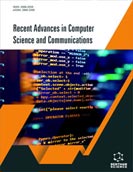Abstract
Breast cancer is the 2nd frequent occurrence of cancer among women, after
skin cancer, according to the American Cancer Society. By using mammography, it is
possible to detect breast cancer before it has spread to other parts of the body. It
primarily affects females, though males can be affected as well. Early identification of
breast cancer improves survival chances significantly, however, the detection
procedure remains difficult in clinical studies. To solve this problem, a Machine
Learning (ML) algorithm is used to detect breast cancer in mammogram images. In this
study, 100 images from the mini-MIAS mammogram database were used, 50 of which
were malignant and 50 of which were benign breast cancer mammograms. Before
training the model, the sample image datasets are pre-processed using numerous
techniques. The required features are then extracted from the sample images using
Feature Extraction (FE) techniques, such as Daubechies (DB4) and HAAR. Finally, the
extracted features are fed into ML classifiers such as Linear Discriminant Analysis
(LDA), Support Vector Machine (SVM), and Random Forest (RF) to create a model.
Several performance metrics are used to evaluate FE and classification. According to
the results of the analysis, the HAAR FE with the RF model is the ideal combination,
with an accuracy level of 91%.
Keywords: Accuracy, Breast Cancer, Confusion Matrix, Diagnosis, Feature, Metrics.






















